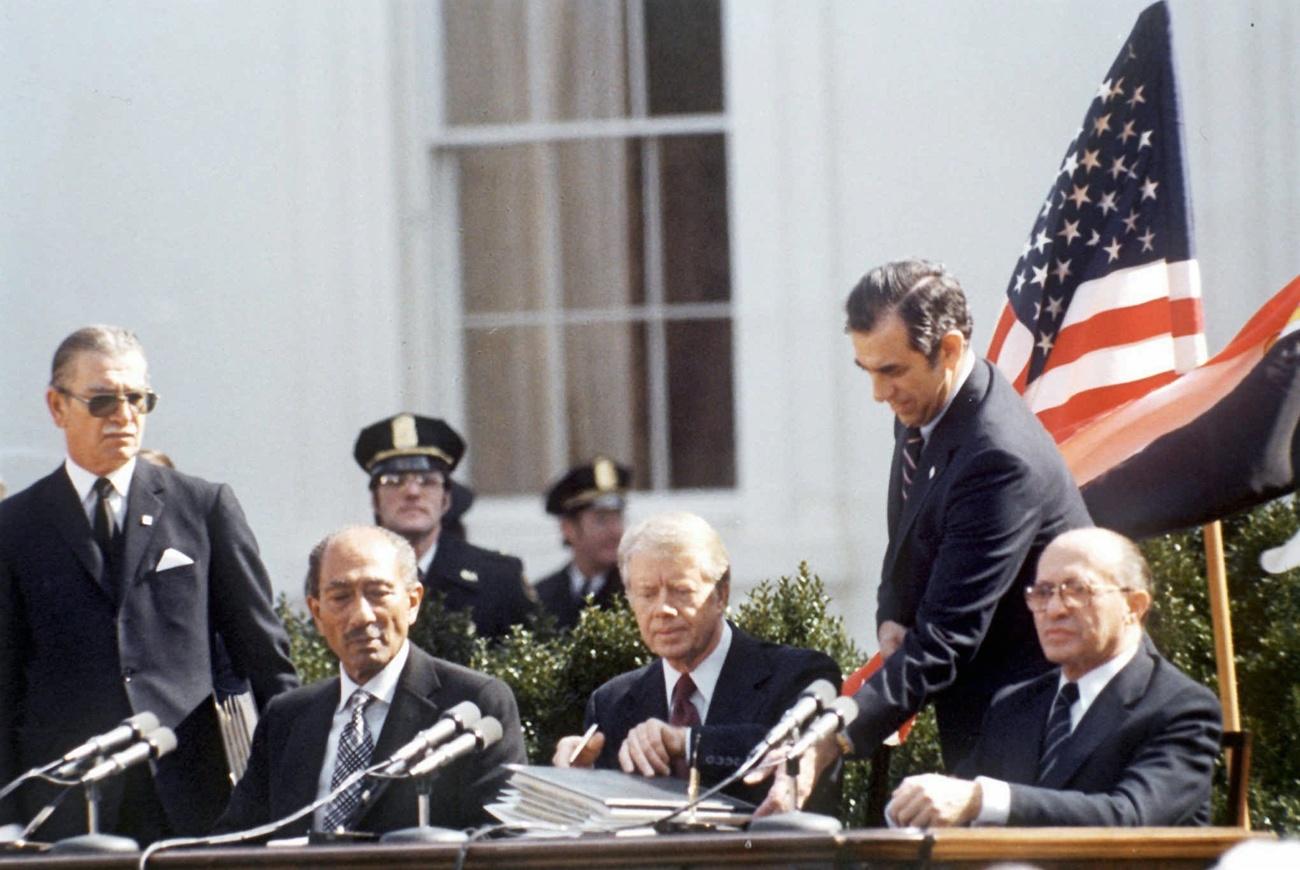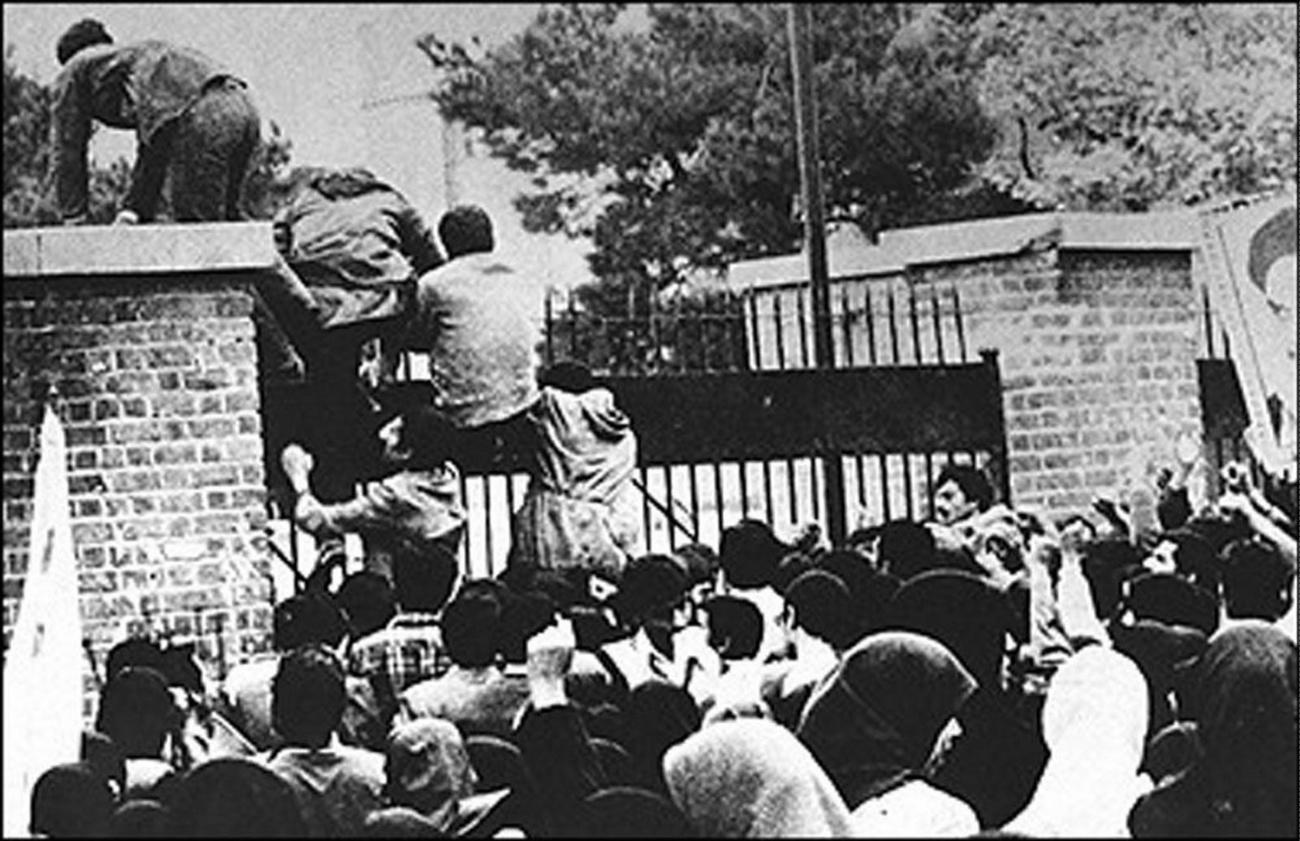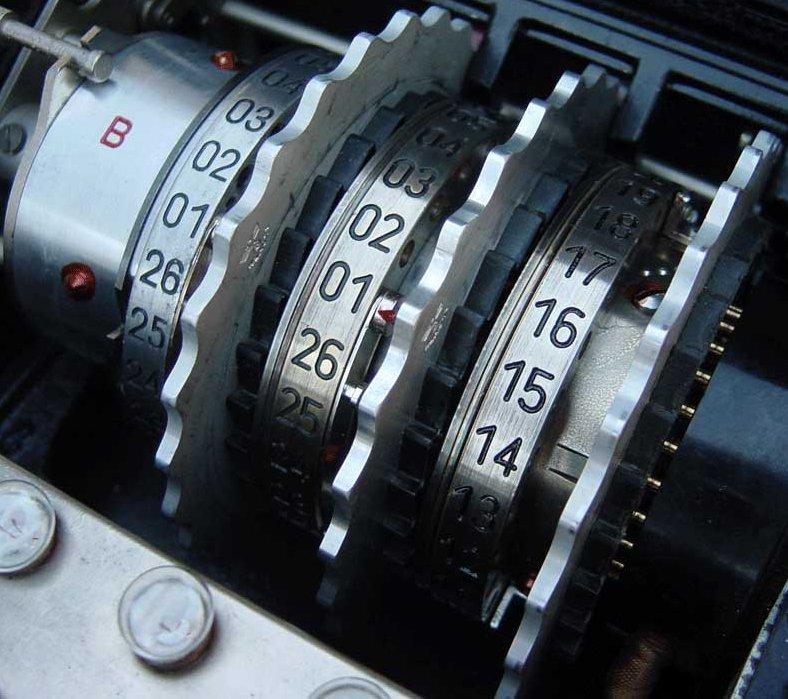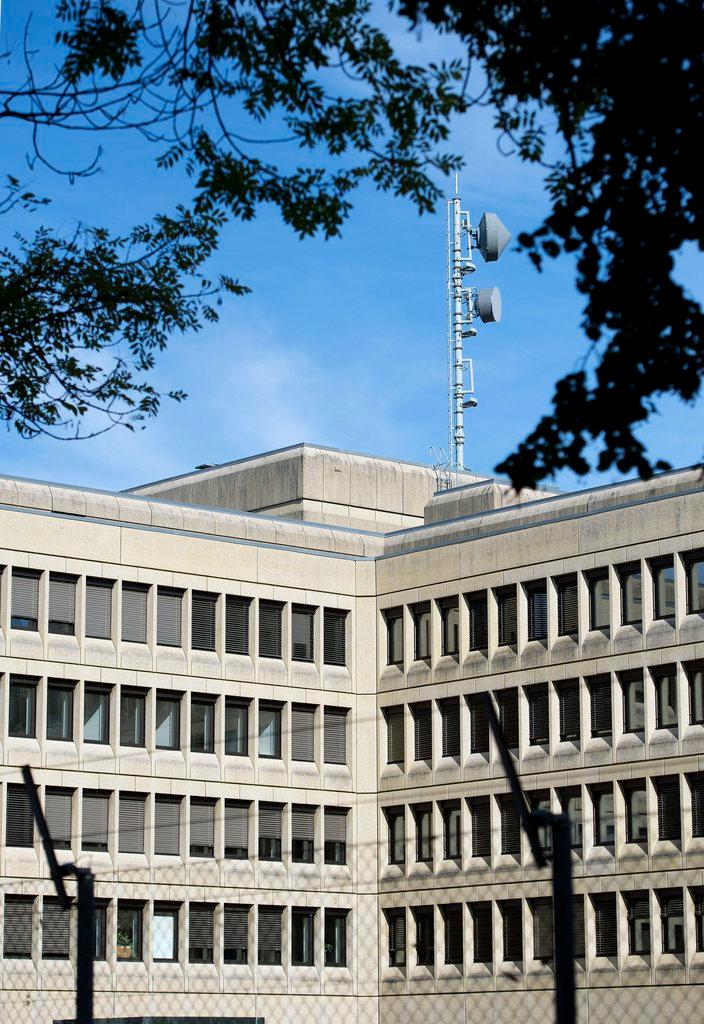How manipulated Swiss tech shaped world politics

Camp David, Iran, Argentina, Panama: These are just a few examples of how the US steered world politics with decoded messages “encrypted” with Swiss machines.
A 280-page secret service dossier by the CIA and the German Federal Intelligence Service (BND) proves that for decades, there has been espionage via manipulated encryption devices from the Swiss company Crypto AG. More than 100 countries bought the encryption devices from the Zug-based company, which did business under the guise of Swiss neutrality, but in reality, belonged to the CIA and the BND.
With the help of the intercepted, supposedly encrypted communications of several countries, world politics were influenced. Below are four examples.

More
Investigation opened into Swiss encryption firm linked to CIA
Camp David
September 1978. A good ten years after the Six-Day War, in which Egypt, Syria and Jordan suffered a heavy defeat and land losses against Israel, US President Jimmy Carter launched a Middle East initiative. It was supposed to finally bring peace between Israel and Egypt, and there was great mistrust among the parties involved.
Carter invited Egyptian President Anwar as-Sadat and Israeli Prime Minister Menachem Begin to Camp David – the presidential recreation compound in the US state of Maryland. Initially, negotiations were conducted in secret. After 12 days of negotiations, the parties presented a plan to normalise relations between Israel and Egypt and bring calm to the Middle East.
According to the CIA papers, it is now clear that the Egyptians were bugged during meetings with their allied Arab states during the negotiations – thanks to the manipulated encryption devices from Crypto. “This means that Jimmy Carter was playing poker, but could see all the cards,” says intelligence expert Richard Aldrich.
In fact, the US president managed to bring long-awaited peace in the Middle East within reach – and Carter looked like the hero. “How valuable was it to be able to read Egypt’s diplomatic correspondence during the Camp David negotiations between Israel and Egypt in 1979? Priceless,” state the CIA papers.
Iran
Early 1979. In mid-January, the US-backed Shah Reza Pahlavi left Iran for the US after months of mass protests and the paralysis of the Iranian economy. On November 4, 1979, angry Iranian students protesting against the Shah’s asylum in the United States occupied the US embassy in Tehran; 52 Americans were taken hostage.
Because US President Carter and Iran’s revolutionary leader and ruler Ruhollah Khomeini couldn’t reach an agreement, Algeria acted as a neutral mediator in the negotiations for the release of the Americans. The 52 Americans were released on January 20, 1981, after 444 days being held hostage at the US embassy. Based on the CIA papers, it seems that Washington had a clear advantage during the negotiations thanks to tapped, supposedly encrypted communications.
A high-level CIA representative told Washington Post journalist Greg Miller that President Carter had obtained helpful information at the time thanks to the manipulated encryption devices of Crypto. “He told me that during the Iran Crisis he received calls from the US president almost daily. Carter would ask: ‘What’s going on? What do we know?’.” Thanks to the manipulated cipher machines, the CIA agent was able to provide Carter with information about what the Iranians were doing and what they had decided.
The CIA papers also underline this fact: “One of the most important advantages was the ability to read the Algerian communications during the negotiations, which eventually led to the release of the American hostages at the Tehran embassy in January 1981,” they state.
Carter himself turned to the Algerian mediator at a media conference after the hostages were released. “I would particularly like to express my special thanks to the Algerians, who did a great job and achieved a fair mediation between us and the Iranian authorities,” he said publicly.
Knowing today that Carter was always up to date with the Iranians’ intentions, this statement appears in a completely new light.

Argentina
The military regime from 1976 to 1983 was also a customer of Crypto. The manipulated ciphering devices enabled the German secret service (BND) and the CIA to learn first-hand how the Argentine military junta dealt with opponents of the regime: how it abducted, mistreated and murdered countless people.
“The CIA papers probably go further than anything we know when it comes to admitting how much Western governments knew about these atrocities,” says intelligence expert Aldrich. He says it is surprising that there hasn’t been more resistance to the events in Argentina from the Europeans and the Americans.
In fact, during the Videla dictatorship, week after week, prisoners were crammed into airplanes and thrown out alive over the open sea. Some human rights groups estimate that as many as 30,000 people fell victim to the military regime during its almost eight-year rule. But this number has been disputed in other quarters with estimates ranging between 9,000 and 15,000 deaths. *
Panama
October 1989. The streets of the Central American country of Panama were in chaos. Military forces attempted a coup d’état against Manuel Noriega. He was known for his cooperation with money launderers and drug dealers. He could still have quashed the coup. But then the USA interfered with the largest airborne operation since the Second World War.
A total of 20,000 US soldiers were involved in the invasion, and after four days practically all fighting was over. Noriega escaped to the nunciature of the Vatican. After ten days, the former ruler surrendered to US troops and was flown to Miami, where he was sentenced to 40 years in prison for drug trafficking, later reduced to 30 years.
According to the CIA papers, “When the US invaded Panama in 1989 to arrest Manuel Noriega, they received the first indication that he was in the Vatican embassy, thanks to the Vatican’s “Minerva”-enabled communications.” In other words, the Vatican was communicating with its embassy in Panama using a manipulated encryption device, and the CIA was listening in.
* this article was updated on February 17 to reflect the discrepancy in estimated deaths in Argentina from the Videla regime.
Adapted from German by Susan Misicka

In compliance with the JTI standards
More: SWI swissinfo.ch certified by the Journalism Trust Initiative












You can find an overview of ongoing debates with our journalists here . Please join us!
If you want to start a conversation about a topic raised in this article or want to report factual errors, email us at english@swissinfo.ch.